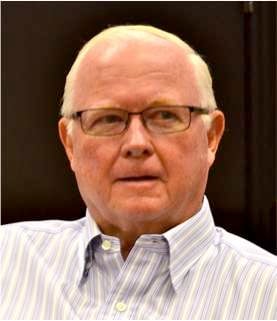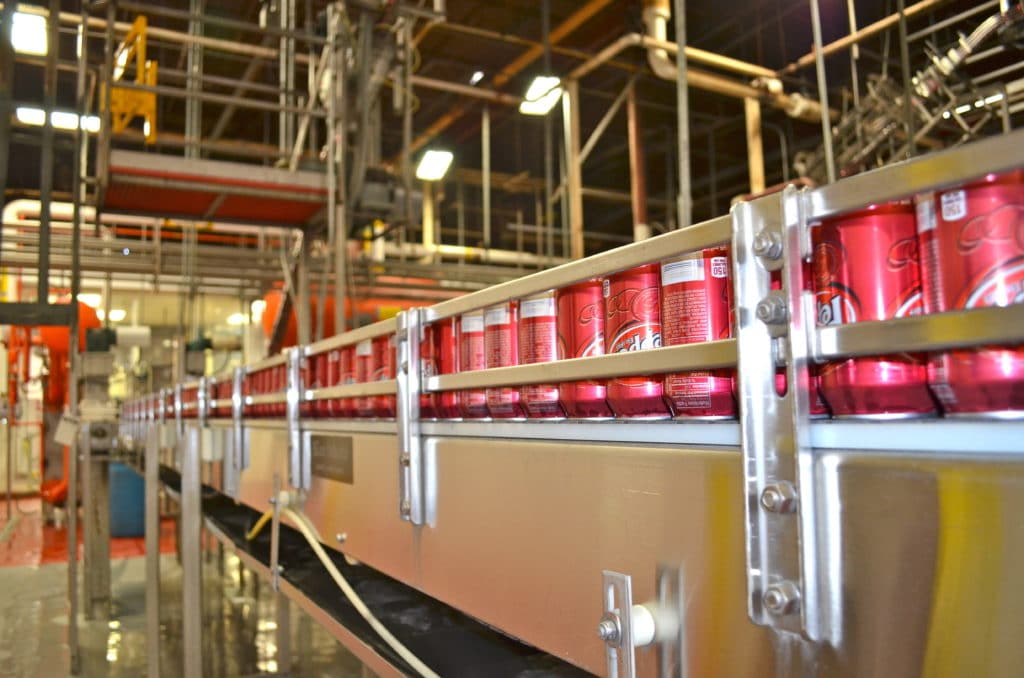Great Plains Coca Cola Bottling Company
Transformation, The Great Plains Way
The Great Plains Coca Cola Bottling Company
 By the time Chairman Emeritus Bob Browne sold the Oklahoma City–based Great Plains Coca-Cola Bottling Company in late 2011 to its corporate parent, it had become the fifth-largest independent Coca-Cola bottler in North America. Great Plains also had become an excellent example of the kind of business transformation that W. Edwards Deming sought to inspire and support through his theories and teachings. Browne’s experience in transforming Great Plains from what he has described as a traditional “command and control” management style to a customer-focused “process control” operating philosophy provides insights into the type of leadership required to realize success in today’s complex business environment. Moreover, the ways in which Browne recast and integrated the four key areas of Dr. Deming’s System of Profound Knowledge® (SoPK)—Appreciation For A System, Knowledge Of Variation, Theory Of Knowledge and Psychology—to best suit the needs of Great Plains is testament to the power of “Deming Today” in American business.
By the time Chairman Emeritus Bob Browne sold the Oklahoma City–based Great Plains Coca-Cola Bottling Company in late 2011 to its corporate parent, it had become the fifth-largest independent Coca-Cola bottler in North America. Great Plains also had become an excellent example of the kind of business transformation that W. Edwards Deming sought to inspire and support through his theories and teachings. Browne’s experience in transforming Great Plains from what he has described as a traditional “command and control” management style to a customer-focused “process control” operating philosophy provides insights into the type of leadership required to realize success in today’s complex business environment. Moreover, the ways in which Browne recast and integrated the four key areas of Dr. Deming’s System of Profound Knowledge® (SoPK)—Appreciation For A System, Knowledge Of Variation, Theory Of Knowledge and Psychology—to best suit the needs of Great Plains is testament to the power of “Deming Today” in American business.
Browne has written a thorough and engaging book covering his implementation of SoPK as part of the core culture of the company, The Great Plains Way: Profound Knowledge of the Real Thing. What follows are highlights of his journey in transforming Great Plains, and a window into his illuminating book.
Growing Pains And Growing Awareness For Change
Browne’s grandfather purchased what is now Great Plains Coca-Cola Bottling Company in 1922. Fifty-eight years later he became Chairman and CEO of Great Plains, making him one of only three people to head the company. In the late 1980s, the company acquired several neighboring Coca-Cola territories, significantly expanding its footprint within the region. To realize greater “economies of scale,” as well as address a growing variety of new beverage types, Browne and his management team attempted to eliminate “redundant” facilities and consolidated production to one manufacturing plant.
However, what seemed like a “logical” consolidation strategy turned out to be counterproductive. The remaining production facility was stressed, and the distribution system became clogged. Out-of-stock and out-of-date reports jumped. Profits were reduced, wastage soared, and customers became increasingly irritated with Great Plains’ service. In short, the company was headed in the wrong direction.
As Browne recalls, “I needed to do something dramatic, and that thing wasn’t to be found in the traditional command-and-control playbook that I had learned as an officer in the Navy, from business school at Columbia University or from my years as an analyst at Arthur Andersen.” Against the counsel of most of the management team, Browne returned to a system of two separate but now integrated production facilities serving the entire territory in a more holistic way. The immediate problems were resolved, but Browne still had an unsettling feeling that his company needed to significantly change its approach.
Systems Thinking as a Starting Point
During the tumultuous events of the acquisition period, Browne read Eliyahu Goldratt’s book The Goal: A Process of Ongoing Improvement and concluded that a holistic system-based approach might resolve the issues then facing the company. Browne remembers, “From 1990 to 1992, we initiated what in hindsight could be called a great deal of systems thinking. Many just-in-time processes were implemented. Systems flow charts were everywhere. The most symbolic evolved into what became known as the Kaizen Model.”
Although islands of excellence did appear in several functional areas as a result of the systems changes, Browne realized that the existing command-and-control business model was putting undue stress on the staff. Furthermore, acceptance of the new systems was limited, and not well understood, even at the senior management level. Departmental silos remained intact, and more often than not, these islands of excellence were the creators of waste. As a result, there were still no material synergies resulting from the acquisitions.
Discovering Deming And Identifying A Challenge
In a serendipitous way, during this same period Browne began reading alternative management theories and non-Western traditions and philosophy, including Taoism. He first became aware of Dr. Deming at a Duke University seminar. As he began to further examine Dr. Deming’s theories and teachings, he found in them support of the new direction he was developing for his company.
While Browne believed in the power of the theories and teachings of Dr. Deming, he also understood the challenges of explaining and implementing them in the organization. Browne has given a lot of thought as to why this might be, and has come up with some compelling theories. He believes that the traditional Western left-brained mind-set and the consequential linear cause-and-effect approach to thinking might be what is hampering the ability of so many leaders in business to understand what Dr. Deming was trying to say. On the other hand, the right-brained mind-set and more cyclical approaches to thinking associated with Asian cultures could be what have enabled their societies to more easily grasp Dr. Deming’s theories and teachings. Indeed, Dr. Deming has been credited with inspiring and guiding the spectacular rise of Japanese industry after World War II.
From Browne’s point of view, “The yin-yang of Eastern cultures seemed to represent the dynamics of a system that talks to itself, turning synchronously just like Dr. Deming’s Cycle of Plan, Do, Study, Act.” He argues, “Most westerners interpret this cycle to be something like the budgeting cycle, where your boss typically sets goals and later checks to see how you are doing.” For Browne, the Deming Cycle might be better interpreted as a feedback loop in a rapidly repeating cycle, measuring how the process is running rather than whether the process is accomplishing some goal. In his estimation, “That is what Deming’s Statistical Process Control (SPC) run charts were measuring.”
Browne also sees Dr. Deming’s Fourteen Points for Management (particularly points 3, 4, 10, 11 and 12) as taking aim at the jugular of a number of traditional left-brained Western paradigms in business, such as the practice of awarding business on the basis of price tag, management by objective and annual merit rating of employees. Browne doesn’t sugarcoat his feelings on this subject: “For most of us, our old paradigms make perfect sense, and Deming’s Fourteen Points sound like gibberish. Nevertheless, something is terribly wrong with our Western ways and our traditional American capitalistic model as we know it.”
Moreover, Browne believes the culturally left-brained Western management style creates a blind spot to fully appreciating the power of Dr. Deming’s SoPK and the other nine points, which include the need to create constancy of purpose, drive out fear, and institute a vigorous program of education and self-improvement.
Blue Boxes And Green Arrows
Many of the company’s system flow charts, including the Kaizen Model, depicted blue boxes connected by green arrows. Browne recalls, “Everyone ‘seemed’ to understand systems thinking and the need for precise systems.” However, he realized most of the people in his company were missing the holistic and interdependent nature of the model. Their “western” focus was solely on the blue boxes.
|
Kaizen is a Japanese tradition, which translated means “continually becoming better through gradual change.” This is similar to Dr. Deming’s principles of constancy of purpose and continual improvement. |
The way Browne sees it, “Western bosses love their blue boxes and managing their people.” He further explains, “In a traditional command-and-control structure, the bosses manage the people and get results by increasing the productivity and output of their individual blue boxes, but as a result, silos develop and there is a great deal of emphasis on management by objectives and merit pay—two things Deming said should be abolished.”
Browne’s solution was to shift focus to the importance of the green arrows of the company’s system flow charts. According to Browne, the green arrows are not simply there to point out the direction of the flow. They are about caring relationships, or what Deming called “Understanding Psychology.” Every blue box is full of internal customers hoping for satisfaction from their suppliers on the other end of the green arrows. The implication is that people don’t work for their boss; instead, they work for some co-worker at the tip end of a green arrow in some other boss’s blue box.
An Articulation Of Great Importance For Great Plains
Browne knew he needed to find a way to communicate the subtlety and substance of the green arrows to the predominately left-brained Western mind-set throughout the ranks of Great Plains. However, he also realized these concepts regarding holistic, nonlinear and caring relationships might seem strange or esoteric to the Great Plains workforce. He found the articulation he was looking for in the title of a Harvard Business Review article he came across at the time describing a systems approach to the order management cycle: “Staple Yourself to an Order.” Browne recalls, “I noticed that ‘Staple Yourself to an Order’ could be abbreviated to the acronym SYSTAO, or SYS-TAO.” The phrase and acronym turned out to serve multiple purposes for Browne in his quest to transform the company.
The acronym embodies and expresses the major influences of Browne’s thinking, and helped him to crystallize the rudimentary idea of a new business model for Great Plains: a traditional left-brained, Western, linear system thinking model that also embraces the more right-brained Eastern cultures’ appreciation of collaborative relationships and cyclical principles, with a goal of continual improvement.
Metaphorically, the phrase "staple yourself to an order" helped everyone in the company become more aware of all the steps in Great Plains’ business process in a more holistic fashion. This included a greater awareness of both "quality consciousness" and the "caring relationships" all along the chain of customers. In fact, the caring relationships extend from consumers and retailers on one end, through internal departments of the company, and back upstream to external suppliers on the other end. This conceptual framework became the foundation for the company’s mission statement: "To become better and make it easier to quench the thirst of our customer’s customers."
In addition, SYS-TAO provided a better way of thinking about the nature and relationship of the blue boxes and green arrows. The blue boxes became the SYS, representing the functional components of the system. The green arrows became the TAO, representing the customer focus, the quality consciousness and the relationships between the blue boxes. Interpreted in this fashion, the green arrows pointed the way to shifting the focus of the company from accomplishing supplier goals to solving customer problems, and from managing people for objectives to managing the process for improvement.
The Transformation Is Everybody’s Job
Bob Browne would be the first to tell you that creating real and lasting change in an organization is never easy. It takes leadership at the top, as well as ownership by the associates. This might explain why the last of Deming’s Fourteen Points states, “The transformation is everybody’s job.” With this in mind, Browne formalized in writing SYS-TAO as the policy and process to be shared with and practiced by the entire workforce, as a source for constancy of purpose, pride for the workforce and joy in the workplace.
In June 1995, Browne instituted the SYS-TAO education program of compulsory workshops, built around a tangible explication of the Great Plains philosophy and manifested in the day-to-day activities of the company. In fact, every Tuesday, for 12 years, Browne personally led groups of 20 Great Plains associates representing all levels and functional areas in collaborative discussion sessions where associates “stapled themselves to an order” to explore, examine and discuss the Great Plains Way.
Today, Browne continues to think about and share his experience of transforming Great Plains through lectures and consultative work. This includes presenting other innovative ideas and practices that he initiated and implemented to support the transformation and success of Great Plains. Many of them, such as Throughput Accounting, The Smart Order, and The Time Paradigm, are either rooted in spirit or a direct outgrowth of SoPK.
Great Plains At A Glance• Fifth-largest independent Coca-Cola bottler in North America • Distributes approximately 500 distinct beverage product package combinations • Gross sales in 2011 of over $300 million • Earnings before interest, depreciation, and amortization (EBITDA) of over $35 million • 1,500 employees • Quenches the thirst of a population of more than 3 million • Superior utilization of plant, property and equipment • Net sales to net asset ratio that is two times the industry average |
To learn more about the Great Plains Way, and find out how your business can start on a pathway of continual improvement, we invite you to Contact The Deming Institute today.
Explore More - Podcasts
Bob Browne, former CEO of the Great Plains Coca Cola Bottling Company
Explore More - Further Read
Coca-Cola was first introduced in Oklahoma in 1903, four years before statehood. The bottling rights in Oklahoma City changed hands a number of times, before being purchased by Virgil Browne and two investors in 1922. Virgil, a pharmacist, had come from New Orleans where he had developed a locally successful orange-flavored drink named Squeeze. He and his partners were pleased with the success of Squeeze but reasoned (correctly) that someday Coca-Cola might be an even bigger brand.





